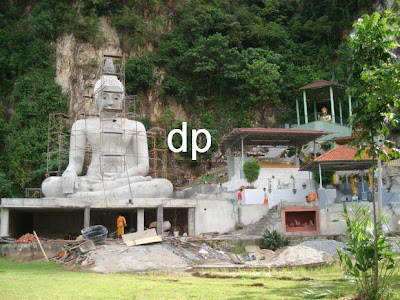
 This temple is an old monastery which was built before the first reign of Rattanakosin (Before 1782). The former name is Wat Klang Na (Temple in the paddy field). In the reign of King Rama I, Somdet Phra Bowonratchao Mahasurasinghanat (The viceroy in King Rama I's reign) granted Mon people and monks to lived in the area, renovated the temple to be residence of Mon monks. Later, King Rama I gave the new name 'Tong Pu' (Name of a town in Myanmar) after the name of Mon temple in Ayutthaya and Lopburi. In the reign of King Rama I , the temple became a center of Mon Sect Of Buddhism as he awarded to Mon soldiers who formed major troop in war with Burmese.
This temple is an old monastery which was built before the first reign of Rattanakosin (Before 1782). The former name is Wat Klang Na (Temple in the paddy field). In the reign of King Rama I, Somdet Phra Bowonratchao Mahasurasinghanat (The viceroy in King Rama I's reign) granted Mon people and monks to lived in the area, renovated the temple to be residence of Mon monks. Later, King Rama I gave the new name 'Tong Pu' (Name of a town in Myanmar) after the name of Mon temple in Ayutthaya and Lopburi. In the reign of King Rama I , the temple became a center of Mon Sect Of Buddhism as he awarded to Mon soldiers who formed major troop in war with Burmese. After the war, the temple was restored and made the Royal Temple and then renamed again to be Wat Chana Songkhram which means Victory Of War, as Thai gained victory over Burmese for three times 1785-1787.


King Rama I's younger brother - H.R.H. Prince Mahasurasinghanart.

In front the Ubosot, Nuns are preparing the foods in an early day and the visitor pass by the temple compound.


The Ubosot of Wat Chana Songkhram.




 Inside the Ubosot, the altar is quite impressive with its gilded Buddha image in front of a large gilded fan, and ceremonial umbrella above. Of special note are the elephant tusks, one pair of which is ebony. Also with veneration of many Phra Buddha statues inside the Ubosot.
Inside the Ubosot, the altar is quite impressive with its gilded Buddha image in front of a large gilded fan, and ceremonial umbrella above. Of special note are the elephant tusks, one pair of which is ebony. Also with veneration of many Phra Buddha statues inside the Ubosot. The new Vihara building is still in works.
The new Vihara building is still in works.

 From the kuti, you would pass under a bell tower (being renovated in February 2003) to reach the temple compound.
From the kuti, you would pass under a bell tower (being renovated in February 2003) to reach the temple compound.  The Chedi at the temple compound.
The Chedi at the temple compound..
See more other Thai amulets at:
http://www.thaiamulets-dhammapath.blogspot.com/






























